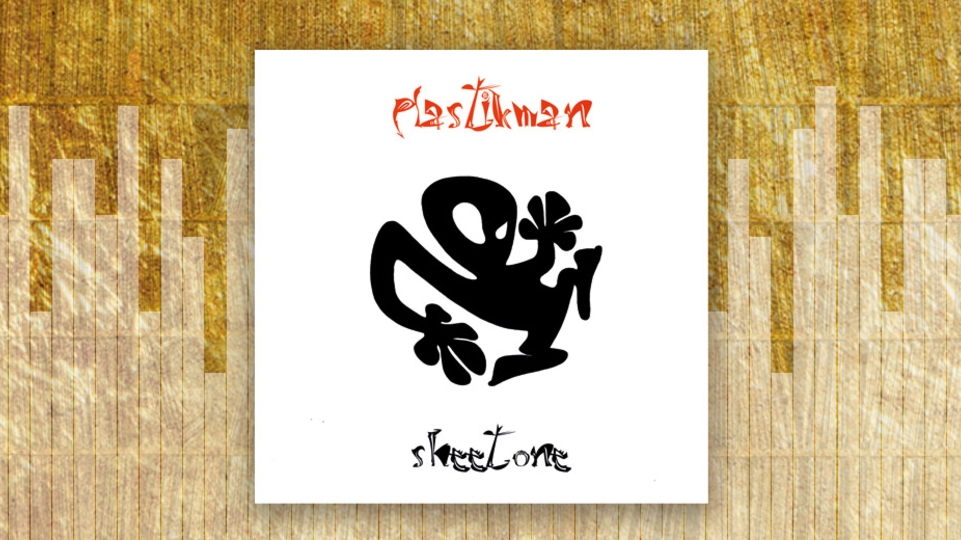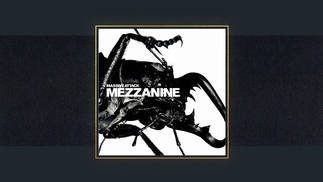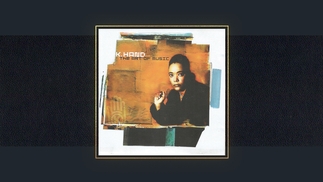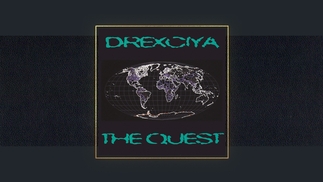Solid Gold: How Plastikman redefined acid techno with 'Sheet One'

Ben Cardew revisits Richie Hawtin’s acidic masterpiece, 1993's ‘Sheet One’, perhaps the most definitive example of Roland’s TB-303 synthesizer ever released in the album format
The TB-303 is one of the most iconic sounds in electronic music; a kind of acidic, alien howl that immediately places the listener in the world of techno and acid house. It is also, to be frank, one of the most over-used tools in dance music. Ever since 1987, when Chicago outfit Phuture released ‘Acid Trax’ — the first song to highlight the frantically detuned squabble of the 303 on a track designed for the dancefloor — not a day has passed when a bedroom producer hasn’t discovered the wonderfully seductive appeal of the 303 (or 303 simulator), resulting in the occasional acidic gem among reams of dull-as-ditchwater dancefloor detritus.
The problem for these producers is not just that their tracks sound derivative; it is that the definitive 303 album (with all due respect to Phuture and German knob twiddlers Hardfloor) was released back in 1993 by an artist who remains synonymous with techno today: Richie Hawtin, under his Plastikman guise. The album was called, in typically acidic fashion, ‘Sheet One’, and early CD copies came in a perforated sleeve that mimicked LSD tabs so effectively one unfortunate Texan fan was arrested for possessing it.
‘Sheet One’ was about acid, then. But the curious — and yet utterly wonderful — thing about the album was that it was both the epitome of the 303’s acidic soul and a thoughtful reaction to the hard, jackin’ sound of Chicago acid house. "I wanted ‘Sheet One’ to be this concept album listening experience thing in my mind," Hawtin told MusicRadar in 2016. "I knew I wanted it to be acidic but not Chicago acid. Not grating either. I wanted something beautiful, soulful and trippy like the guys in the ‘60s and ‘70s used to make."
The sound of ‘Sheet One’ is strangely familiar and utterly alien. It’s no exaggeration to call Hawtin the Jimi Hendrix of the 303 for the way he utterly reinvents the sound of the mechanical box on his 1993 album, making it emote like no one has managed before or since. On ‘Sheet One’, the 303 is by terms pensive, melancholy, malevolent, cheeky, frosty and welcoming, with Hawtin ringing a world of emotion out of Roland’s failed bass synthesizer.
He did so by essentially jamming it out live and then re-editing. Stand-out album tracks ‘Plasticity’ and ‘Plasticine’, for example, were both cut down from 40-minute-long jams into stand-alone 10-minute pieces. "The immersive fluidity you hear on ‘Sheet One’ was exactly what I wanted to capture, because that was the type of feeling I loved on the records that I was inspired by,” Hawtin told MusicRadar. “To make that type of music you had to have that hands-on type of mixing.”
You can feel the lightning-strike magic of a 48-hour studio session running through ‘Sheet One’. For all the 303’s alien sound, Hawtin produced a very human record, one that is full of the most captivating emotions, as if the young producer transposed himself directly onto the record’s undulating grooves in a fit of inspiration. Opener ‘Drp’ is a hugely sad song, a wash of textures and electronic strings which seem to collapse in a pile of sighs; ‘Smak’, meanwhile, is a whirl of robotic fury, and ‘Plasticine’ seems to pine for lost love.
It helps that ‘Sheet One’ is a masterpiece of atmosphere. This is an album of vast, cavernous spaces: the snaking 303 line on ‘Plasticity’ has the physical presence of cathedral reverb, the track’s echoing cries as chilling as The Exorcist’s spider-walk; while ‘Gak’ has a stately synth melody that echoes back to Kraftwerk’s ghostly ‘Radio-Activity’. Even a track as seemingly unimportant as ‘Okx’ — a 30-second vocal sample bathed in spectral effects that has been criminally missed off the album’s reissue — is perfectly judged, with lines like “I don’t remember falling asleep” and “And then I blew out the candle” becoming catchphrases for DJ Mag’s gang of Plastikman-loving nerds in the early 1990s.
Perhaps surprisingly for an album of the wee hours, ‘Sheet One’ is home to some wonderful drum programming too. ‘Gak’ sees Hawtin interrupt the song’s early-morning avian coo with a disjointed, stuttering rhythm of the kind that Rian Treanor would later make his own, while ‘Helikopter’’s drum machine workout is a cousin to Hawtin’s classic ‘Spastik’, released the same year. ‘Helikopter’ is a tour de force of minimalism, its production stripped back to drum hits and shifting delays that feed back to create the titular helicopter effect.
‘Sheet One’’s echoing minimalism can be heard in the early ‘90s work of Basic Channel, with the album’s inspiration later flowing into the minimal scene of the 2000s, in which Hawtin himself would play such a pivotal role. Rather beautifully, though, ‘Sheet One’ never quite fit with any scene. There are trace elements of Detroit — a city where Hawtin regularly played around this time — in ‘Sheet One’’s atmospheric murk, as well as the Chicago acid sound, while Hawtin was briefly associated with Warp Records’ ‘intelligent techno’ scene, his ‘Dimension Intrusion’ album as F.U.S.E. being released as part of the Sheffield label’s Artificial Intelligence series.
‘Sheet One’ can see its reflection in all of these. But it was always very much its own beast, a 303-led masterpiece of introspection, human emotion, beauty and fear. Hawtin himself perhaps best summed up its appeal: “It’s music for the end of the party as you're melting into the floor, which is exactly what the name Plastikman was made to represent,” he told MusicRadar. Rarely has melting been this emotionally rewarding.

.png.jpg?itok=4x9HUObe)


.jpeg.jpg?itok=Qs4dpMUR)
